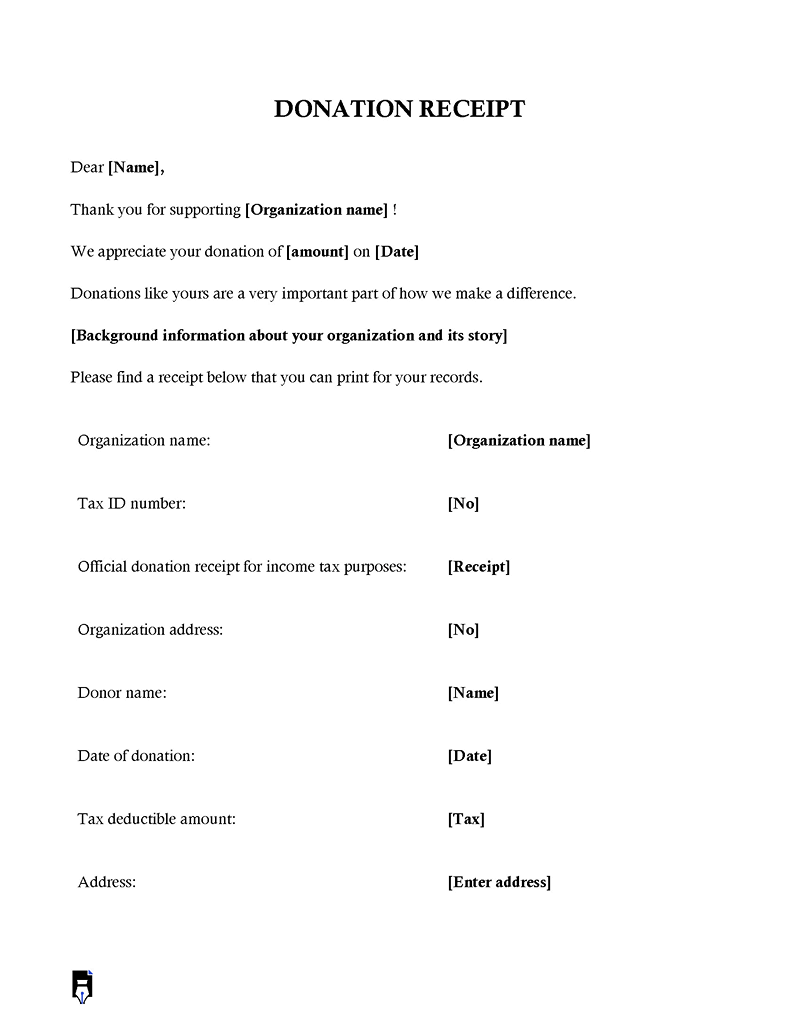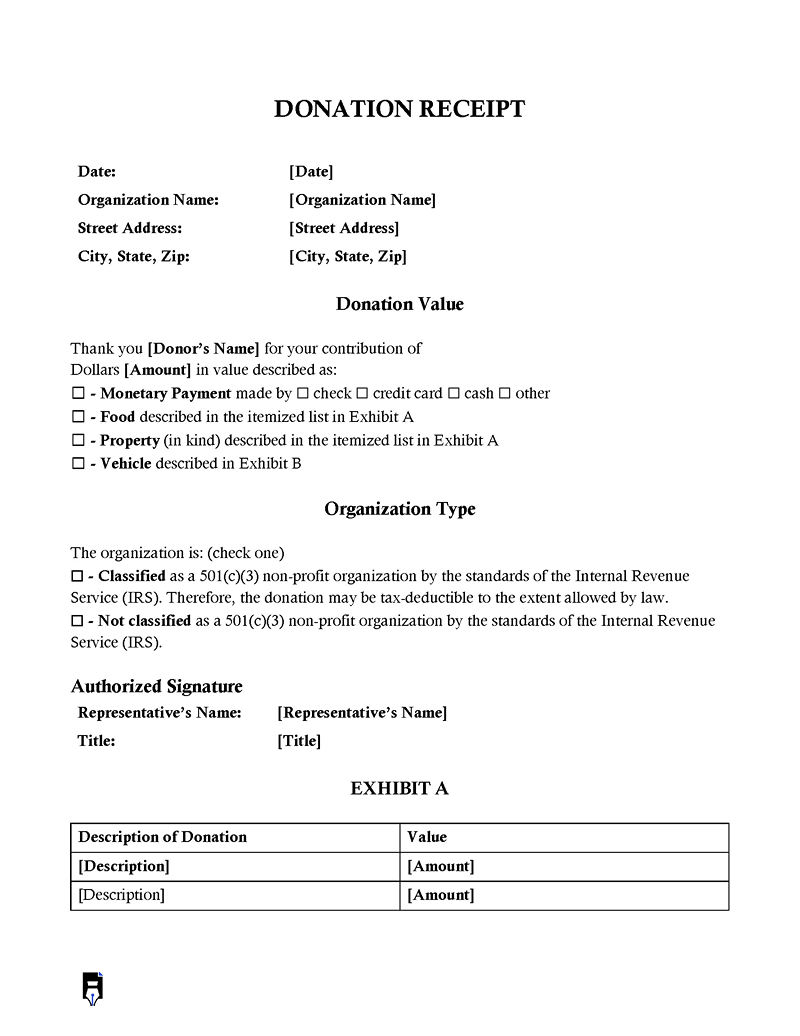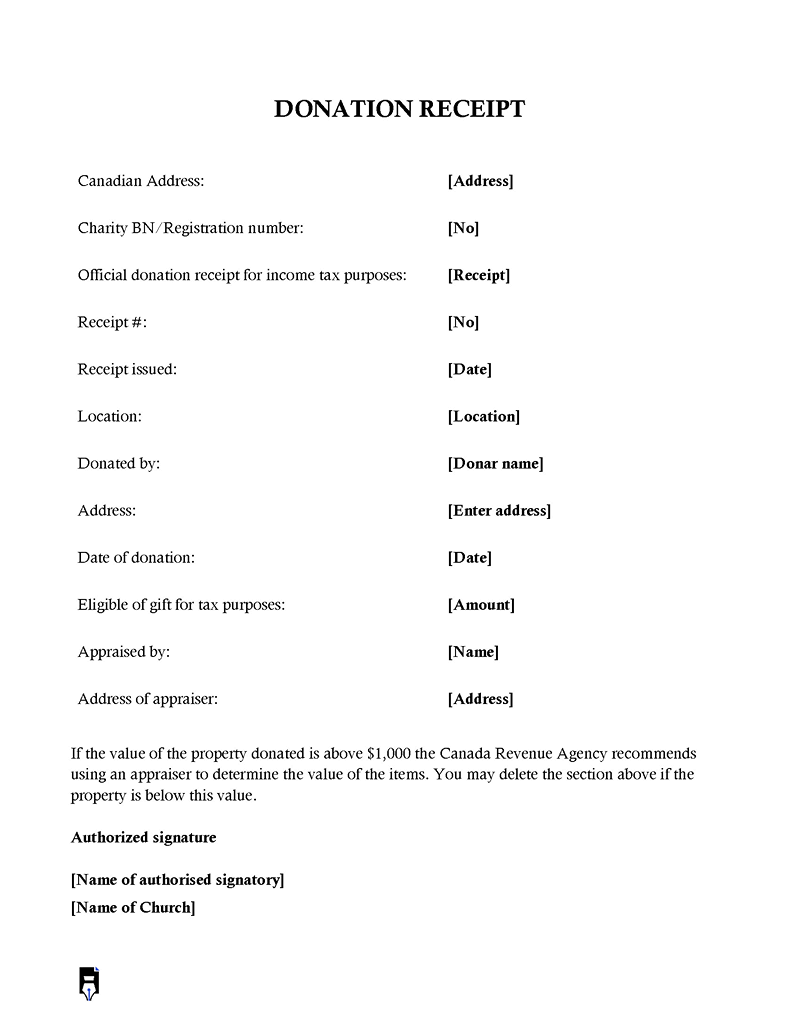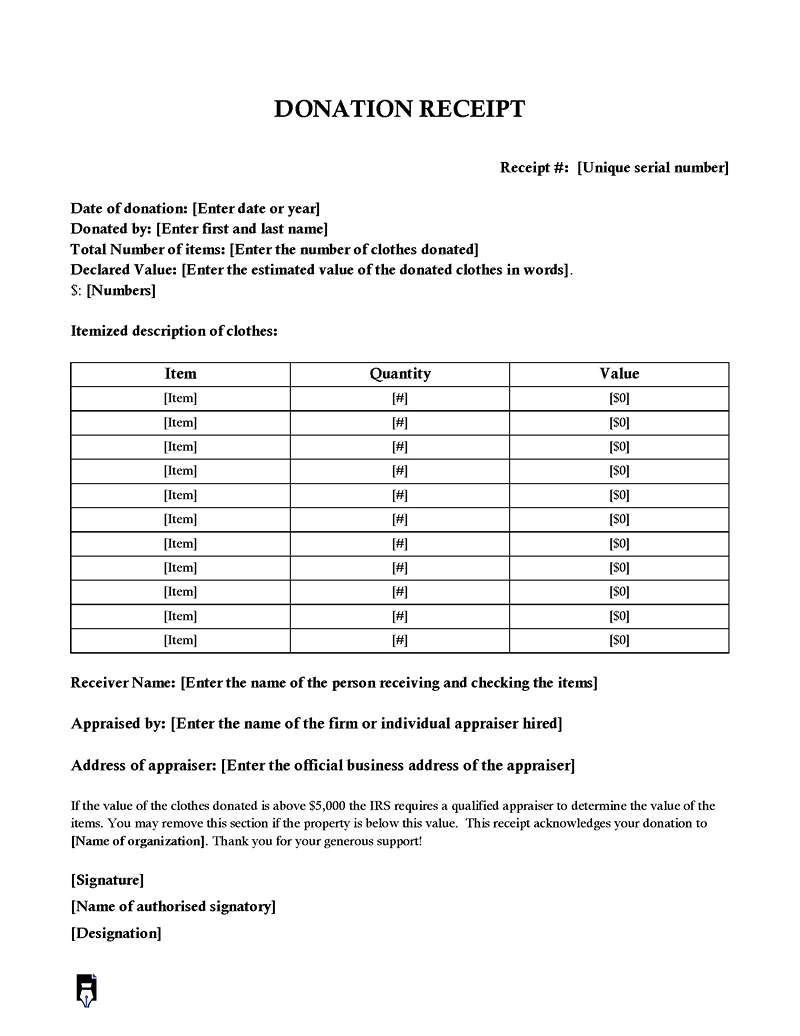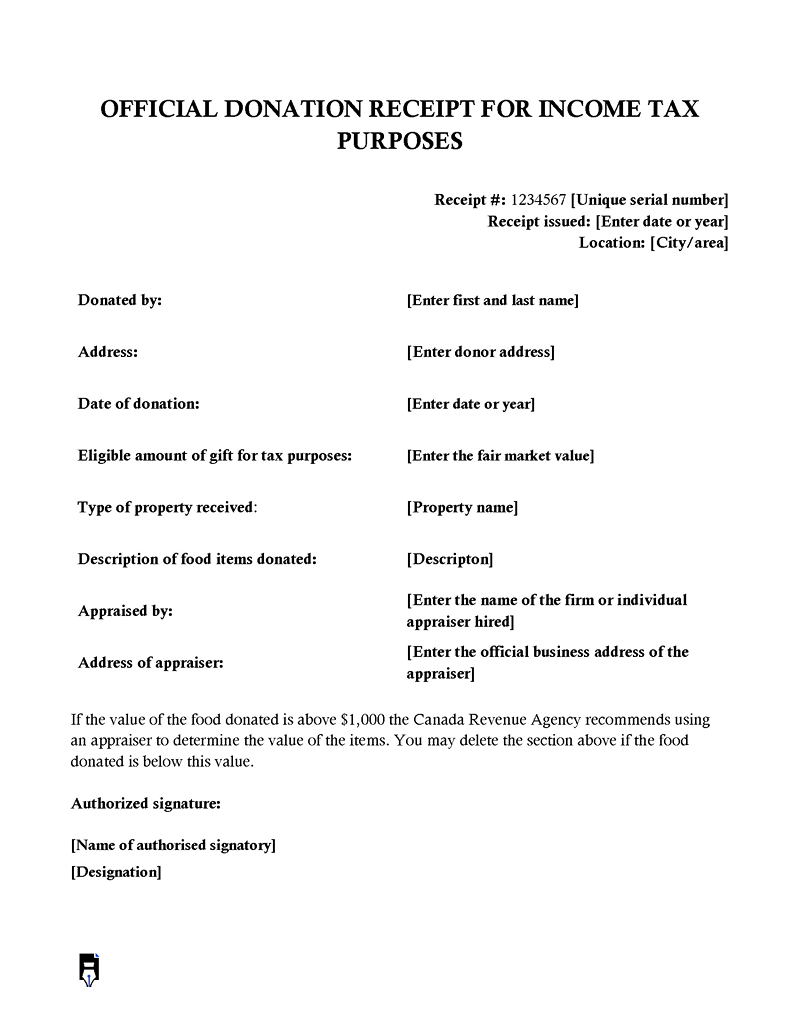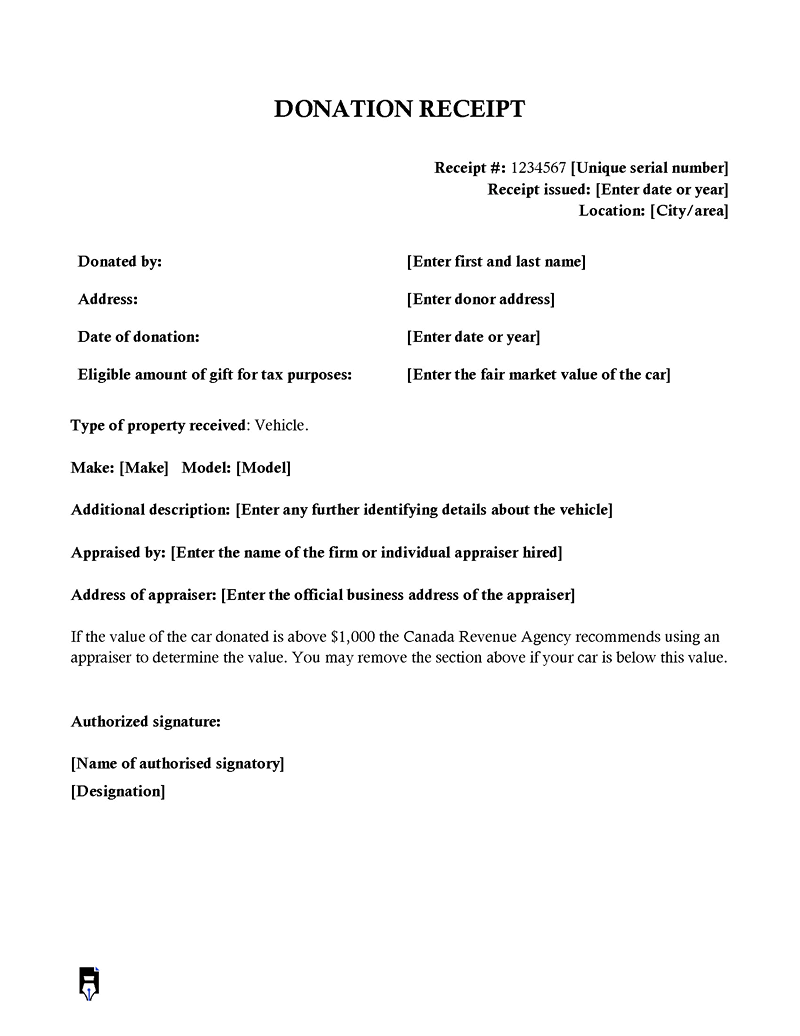Donation receipts are the means through which a nonprofit organization acknowledges financial contributions from its donors.
While donation receipts come in various shapes and sizes, they all achieve the same purpose. Most donation receipts are filled-out forms, but a letter, email, or card can qualify as a donation receipt. Sending clear and unique gift receipts is a standard practice that benefits everyone engaged with the organization. Furthermore, simplifying the process of making and delivering these receipts can aid in the organization’s long-term growth.
This article discusses the purpose, information to be included, and how charity organizations can properly draft donation receipts.
Important Note: By law, only tax-exempt organizations such as churches or charities can receive tax-deductible charitable contributions. For the donor’s contribution to be tax deductible, the organization must qualify as tax-exempt when the contribution is being made. These organizations are 501(c)(3) organizations. Contributions to other nonprofit organizations, such as homeowners associations, chambers of commerce, or clubs, are not tax deductible.
Donation Receipts Templates
Given below are donation receipt templates:
Donation Receipt
A donation receipt is a document that acknowledges that an individual or organization has made a charitable contribution.
It is typically provided by the organization that received the donation and serves as proof of the donation for tax purposes. The receipt should include the donation date, amount, and description of the donated items or services. It may also have the donor’s name and contact information and the organization’s tax identification number. Donation receipts can be sent for gifts and one-time contributions within one to two days. A combined receipt can also be sent annually detailing all contributions made the entire year.
Did You Know? There are very few tax-exempt organizations around the world. They are even fewer in the United States, where only 29 exist. Few as they may be, all nonprofit organizations have to issue a donation receipt when they receive a donation.
Why and When are Donation Receipts Necessary
When you receive a charitable contribution, issuing your donor a donation receipt is necessary. It may be a law requirement, or your donor may want to keep a record of their donations.
First and foremost, they serve as proof of the donation for tax purposes. If your donor donates $250 or more, you must issue them a receipt to claim a tax deduction for their donation. The donation receipt serves as a written acknowledgment. However, even if the donation does not reach this threshold, it is still a good idea to issue a donation receipt to your donor, especially if your donor requests the receipt.
While a receipt may not be required for tax purposes, in this case, it can still be helpful as a record-keeping tool and a way to document the donation. You should consult a tax professional to determine whether a receipt is required for a specific donation.
Donation receipts can also be used to track donation history for you and your donor. The receipt can help your donor keep track of their charity and ensure that they are making the appropriate tax claims. The donation receipt helps you document your donations, which can be necessary for accounting and financial reporting purposes. Donation receipts can also build trust and goodwill between you and your donors. By providing a receipt, you demonstrate transparency and accountability, which can help to build trust and encourage future donations.
For individuals making donations for the first time, a well-structured donation receipt can determine whether they decide to donate again. A robust receipting system allows you to keep a record of donations and track your campaigns. Keeping a backup of receipts may prove beneficial if any of your donors need a second receipt in case they misplaced the original one.
Types of Donation Receipts
Not all charities are the same, and not all perform similar activities. Therefore, different donation receipts are issued to donors under different circumstances.
The following are the different types of donation receipts:
Charitable donation receipt
A charitable donation receipt is a letter or email that an organization provides to a donor to acknowledge that a person or organization has made a charitable contribution. They are typically provided for donations of $250 or more. These receipts are only issued for donations made to 501(c)(3) organizations.
Cash donation receipt
A nonprofit organization usually provides a donation receipt to acknowledge that a person or organization made a charitable contribution in cash. A cash donation receipt usually has the name of the donor. However, in some cases, the organization may not specify the name if the donor wishes to stay anonymous.
In-kind donation receipt
An in-kind donation receipt is a letter or email that acknowledges the donation of non-monetary items or services to an organization. In-kind contributions may include clothing, food, or equipment. They may also include other tangible goods and services, such as volunteering time or providing professional expertise.
Silent auction donation receipt
A silent auction donation receipt acknowledges the donation of an item or service to a silent auction. A silent auction is a fundraising event whereby items or services are displayed, and people can place bids on them without the bids being announced publicly. A silent auction donation receipt is then issued for the fair market value of the goods or services donated, usually determined before the auction. Two types of donation receipts are issued during silent auctions: receipts for items issued and receipts for items bought.
Stock gift donation receipt
A stock gift donation receipt acknowledges the donation of stocks, bonds, mutual funds, or other securities to an organization. Donations of stocks or bonds may be tax-deductible for the donor, depending on their tax situation. In addition, a stock gift donation receipt usually defines special terms or conditions associated with the donation, such as restrictions on the use of the funds or the timing of the transfer.
End-of-year donation receipt
An end-of-year donation receipt details the sum of an individual’s donations to a charitable organization in an entire year. Organizations must provide end-of-year donation receipts to their donors, as they can serve as documentation for tax purposes, especially when the contributions are above $250.
Information to Include on a Donation Receipt
The donation receipt has to include all the necessary information for the donor to use for various accounting purposes. According to the IRS, you should include the following essential elements in your donation receipt:
Name of the organization
Your organization’s name should appear in bold at the top of your receipt. Most importantly, specify whether your organization is 501(c)(3) registered. You may also include your organization’s contact information below the name for your donors to reach you in case of inquiries.
Write your organization name in the format shown below:
[Name of Organization]
501(c)(3) Registered
[Street Address]
[Phone Number]
[Fax Number]
[Email Address]
[Website]
Organization’s federal tax identification number
Below the organization name, specify your organization’s federal tax identification number. This is essential as it allows your donors to reference your organization when filing their taxes, allowing them to claim tax deductions.
Donation date
Below your organization’s ID, enter the date when the donation was made. You must present the donation date in full since your contributors must disclose the date on their tax returns in order to qualify for tax deductions.
Donor’s name
Below the date, enter your donor’s name in full. You may also include the donor’s contact information if you need to follow up on their donation status.
Enter your donor’s name in the format shown below:
Donor Name:
[Surname], [First Name], [Middle Name]
Phone Number:
[Donor Phone Number]
Address:
[Donor Physical Address]
Email:
[Donor Email Address]
Type of donation
Below the donor’s name, specify the type of donation they made. The donation may be a cash donation, in-kind donation, or stock gift donation. The type of contribution allows your donor to cite it when reporting their taxes.
Value of donation
Specify the amount of the donation made. Suppose the donation is not easily valued, for example, an in-kind donation of food or clothes. In that case, the receipt should include a statement that the value of the donation is based on the donor’s estimate of the fair market value. If the value exceeds $250, your donor must claim the donation on their taxes.
Enter the value of the donation in the format shown below:
Thank you for your generous donation of $Amount] to [Organization Name]. Your support is greatly appreciated and will help us to continue our work [Insert details about your organization’s mission or goals].
Exchange for the donation
Indicate whether any goods or services were offered to your donor in exchange for their donation to your organization. For example, if your donor donated $75 or more and you gifted them tickets to a wrestling match in return, you ought to specify the value of the tickets in your donation receipt.
Name and signature of the organization’s representative
Include your name and signature at the bottom of the receipt to verify that all the information is valid and can be used for tax purposes.
Enter your name and signature in the format shown below:
Organization Representative: [Representative Name]
Representative signature: __________________
Date:
[Date]
Disclosure
Thank your donor for their kind donation and indicate that their kindness will go a long way in attaining the objectives of your organization. This could impact whether your donor is willing to donate in the future. Ensure you check local state guidelines before including any disclosure statements, as these vary from state to state.
Additional information
Finally, include any special terms associated with the donation. These terms may include restrictions on the use of the donations or the timing of the transfer. You may include a statement or a compelling call to action to help retain donors and build stronger relationships with them. If required, you can add an Employee Identification Number to assist your donors while filing their taxes.
7 Best Practices to Consider
You should issue proper and information-rich donation receipts so that your donors can use them for accounting purposes. You should make the following considerations when creating a donation receipt:
Make it clean
Your donation receipt should be clean and organized because it serves as a record of the donation made by your donor. The receipt should be clear and easy to understand so that your donor can easily reference it for tax purposes or their records.
Make it an engagement piece
Add compelling pictures, testimonials, or links to your social media accounts to your donation receipt to make it more engaging. Media pieces like these compel your donors to keep donating to your organization.
Use a unique donation ID
Include unique donation IDs to your receipts to accurately identify and track individual donations. This is especially important if your donor requests a copy of their receipt or if there is a need to verify the authenticity of a receipt. With a unique donation ID, it is easier for you to maintain accurate records of donations and generate reports on your donor base and donation trends. You may also use donation management software to generate donation IDs for your organization.
Be clear about what is tax-deductible
Indicate which donations are tax deductible and which ones are not. This can help your donors understand what they can claim as a tax deduction. Therefore, your donors can ensure they have the necessary documentation to support their claim. This can help to reduce errors or disputes related to tax deductions, and it can also increase donor confidence in the organization and encourage future giving.
Store copies of donation receipts
Store copies of donation receipts you have issued so that you can track the donations you receive and manage your organization more effectively. Storing copies can also be helpful if you need to provide proof of the donations you received for any reason.
Keep formatting consistent
Maintain a singular, consistent format for your donation receipts to ensure that the information on your donation receipts is clear and easy to understand. This can be especially helpful if your donors need to provide the receipts to the IRS or government agencies for tax or other purposes.
Use templates
Use pre-made downloadable donation receipt templates to ensure all the necessary information is included. Donation receipt templates can also make creating receipts easier and more efficient. You can consider creating templates for non-cash contributions, recurring donations, failed donations, and pledges. This ensures you have the required template to create a receipt for any donation you receive.
Frequently Asked Questions
Are receipts necessary for in-kind donations?
Yes. You should provide a receipt to your donors for in-kind donations, even if it is not required by law. In-kind donations should be treated as monetary donations. The organization should provide an estimate of the fair market value of the in-kind donations, but it is up to the donor to determine the actual value of the donation for tax purposes.
What about partial donations and membership dues?
Partial donations and membership dues may not be fully tax deductible. To claim a tax deduction for a partial donation or membership dues, a donor must indicate the portion of the payment that is tax deductible. This should be separately stated on the donation receipt.
How do donation receipts work for donated vehicles?
Donation receipts for donated vehicles work the same as those for other types of donations. The receipt may also include a statement about the value and condition of the vehicle. It is important to note that some particular rules and limitations apply to vehicle donations. The organization must be qualified to claim a tax deduction for a vehicle donation, and the donor must itemize their deductions on their tax return.
Who are the eligible or qualified donees?
Eligible or qualified donees are organizations recognized by the Internal Revenue Service (IRS) as eligible for tax-deductible charitable donations. The most common types of qualified donees are 501(c)(3) organizations, which are charitable organizations that are exempt from federal income tax. To qualify as a 501(c)(3) organization, an organization must be organized and operated only for the following reasons: charity, religion, education, science, literature, public safety testing, promotion of international amateur sports, or preventing cruelty to children or animals.
What happens if a donor has their donation deducted from their paycheck?
If a donor has their donation deducted from their paycheck, the donation will be treated as a charitable contribution made by the donor. The donor can claim a tax deduction for the donation if they itemize their deductions on their tax return and if the donated funds are given to a qualified organization.
